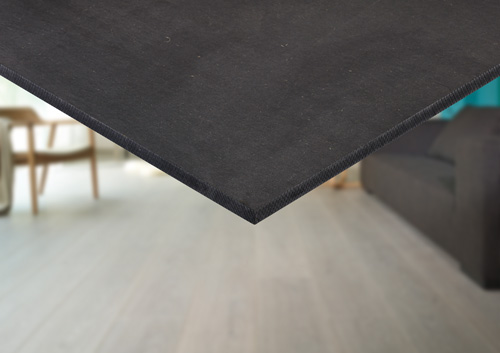Quality wood products from around the world.
InterGlobal Forest Overview
High-density MDF board, coloured black in the mass, with a hard, fine and smoothly sanded surface.
MDF Fibralux FR Black has low formaldehyde emission (E1 class). Upon request, this MDF board can be supplied with PEFC, FSC or FSC Controlled Wood certificate.
MDF Fibralux FR Black is hardly flammable (European fire reaction classification B), has a significantly delayed combustion and does not contribute to flame spread. For thickness from 6 to 11,9 mm, MDF Fibralux FR Black is B-s2-d0 certified (EN 13501-1). For thickness from 12 to 30 mm, MDF Fibralux FR Black is B-s1-d0 certified (EN 13501-1).
| Sizes (ft) | 4x8 to 8.2x20 |
| Thickness (in) | 15/64 to 63/64 |
| Finish | Can be lacquered or finished with paper, foil, melamine, veneer or high pressure laminate |
| Class | Type FR-MDF.LA according to EN 622-5 |
| Certs |
|
MDF Fibralux FR Black is suitable for interior decoration, industrial processing, and furniture production. The board can be lacquered or finished with paper, foil, melamine, veneer or high pressure laminate.
MDF Fibralux FR Black is very much appreciated in applications where MDF panels are perforated (e.g. acoustic ceilings or wall systems). As the boards are coloured black in the mass, the perforations or grooves are also black and give a nice contrast with the surface finishing of the panel. The same applies for the edges : further processing of the panel edges is not always necessary to have a nice esthetical finishing.
MDF Fibralux FR Black can be used in applications where MDF panels with a reduced fire reaction, flame spread and smoke development are requested (such as finishing of stairway halls, escape routes or lift shafts in public buildings such as hospitals, airports, retirement homes, theatres, hotels, etc...).
MDF Fibralux FR Black can also be used as part of a building element or system that is aimed at having an increased fire resistance, such as fire doors, ceiling systems or partition walls. The fire resistance certification of such elements or buildings systems in line with local regulations is the responsibility of its producer.
The board must be applied in service class 1 (restrictions in temperature and ambient humidity) and can only be used in biological hazard class 1 of EN 335-3. The boards must be protected from any direct contact with water. They must be stacked flat, on a pallet or using a sufficient number of cross members. Boards should not be stored vertically, unless ground contact can be avoided.
